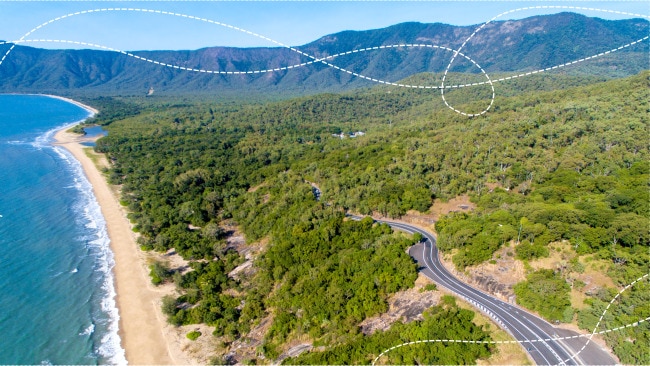Decoding the sunscreen bottle
IT SOUNDS ridiculously basic, but there are a whole heap of things people don’t know about sunscreen — like even how to apply it.

WHEN it comes to sunscreen, we all know the higher the SPF, the better. But why? Here, we dive into the fine print to demystify the specifics of sunscreen.
THERE are two types of sunscreen purchasing scenarios. Scenario one is when you are browsing the aisles in the supermarket, casually calm and organised when you see a great deal and think to yourself, ‘Hmm, I’ll stock up for summer.’ Scenario two is when you’re on the way to the beach on a roasting hot day, you drive past a pharmacy (cue a hasty stop), and you dash inside. The next bit is the sweaty-panicky bit. You’re faced with a wall of sunscreen and are completely stumped. Which one do you choose? Should you pick the most aesthetically pleasing bottle? What does the 50 in SPF50 actually mean? Should you buy the one that smells the best?
Hands up if you relate to scenario two? Yep, thought so.
Choosing a sunscreen can quite often be a bit of a lottery, especially when the scientific jargon written on the bottle can confuse your purchasing process. So, rather than making you attend summer school to brush up on your chemistry, we thought we could help demystify some sciencey-sunscreen language to help you make the right choice for you and your family.
Notebook ready? We’ll begin...
WHAT DOES THE 50 IN SPF50+ MEAN?
SPF stands for ‘sun protection factor’, and the 50 in SPF50 refers to the amount of protection the sunscreen offers compared to unprotected skin.
High factor sunscreens (SPF50+) are designed to allow less damaging rays to reach your skin’s surface than lower SPF sunscreens. One useful way to think about it is to remember that the SPF number refers to the theoretical amount of time you can stay in the sun and be protected without getting burnt, compared to unprotected skin. For example, SPF30 allows you to stay in the sun with less risk of sunburn for thirty times longer than you would if you weren’t wearing sunscreen.
Be careful though; sunscreen is only effective if it’s applied correctly. It might sound like basic life advice, but after applying, wait for sunscreen to soak in by keeping yourself, and the ankle biters, inside for at least 20 minutes before you head into the sun. If you have very fair skin, are swimming (then drying with a towel) or sweating a lot you can reduce the effectiveness of the protection. And, just like your mum always nagged, wear a hat, a long-sleeve shirt and sunnies.
WHAT ACTUALLY IS A ‘BROAD SPECTRUM’?
Most bottles will say something like ‘Broad Spectrum UVA/UVB Protection’, but we don't really understand why. Understanding the different types of rays is important. (We’ll try to make this bit easy …)
UVA rays are the ones that deeply penetrate into your skin. These are the guys that are responsible for ageing the skin (yes, this means wrinkles) and can contribute to developing skin cancer. Can we get an, ‘Er, no thanks’?
UVB rays don’t penetrate as deeply, but these are the ones that cause skin cancers and burning. They tend to shine down between those well-documented danger hours of 10am and 3pm.
Broad spectrum protects you from the full range of UV rays that reach your skin.
So the lesson here is you need a sunscreen that protects you from both UVA and UVB rays, ensuring you’re covered all year round.
HOW RESISTANT IS WATER RESISTANT?
For most of us, a day in the sun inevitably means getting wet; whether it’s the pool, ocean or backyard hose, you need to cool off somehow. Most sunscreens offer a level of protection meaning you can hop in and out of the water without worrying too much. You should always opt for a sunscreen that’s tested for four-hour water resistance for peace of mind.
One myth we can also clear up is that some UVB and UVA rays can still reach your skin when you’re swimming 1m underwater, up to 50 per cent in fact. Also, while we’re on the topic, water increases the intensity of UV rays through its reflection. Your summer mantra should be: reapply, reapply, reapply (every two hours!) after swimming, using a towel or sweating.
FINAL THOUGHTS
So, now you’ve got all the lingo down pat, next time you hurtle into a shop to grab a sunscreen bottle look for an option which offers four-hour water resistant Broad Spectrum UVA/UVB SPF50+ — and reapply every two hours or more often if you’re running around or dipping in and out of the water. Banish those sweaty, panicky moments and embrace your new cool, calm and, most importantly, covered demeanour.
*Apply generously to the skin 20 minutes before skin exposure, then reapply frequently, and after swimming or towelling.



